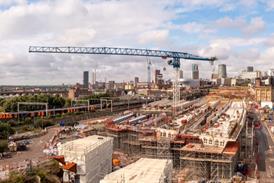Catherine Gelder and Frances Gordon-Weeks on the government’s plan to resolve building safety delays
Notwithstanding the government’s interventions to date, and seven years after the Grenfell fire tragedy, thousands of unsafe buildings are yet to be remediated. The newly announced Remediation Action Plan is the government’s attempt to resolve these delays. Below, we will summarise the measures proposed in the plan.
Prior measures
Following the Grenfell fire in 2017, the government has taken various steps to encourage and then compel building owners to identify and remediate life-critical fire safety defects in the external wall build of their buildings.
The approach has evolved over time, with the creation of the government-backed remediation fund in 2020 (called the Building Safety Fund); the enactment of the Building Safety Act in 2022 (bringing with it extended limitation periods and new rights of action against relevant parties); and, more recently, the introduction in early 2023 of remediation contracts, pursuant to which developers agreed to meet remedial costs for their buildings.
The scope of the buildings and defects covered has also expanded over time.
Nevertheless, there are up to 10,000 buildings where remedial works have not yet concluded.
>>Also read: Backing the builders over the blockers signals real intent from the government
>>Also read: What routes do contractors have to claim against cladding firms?
The acceleration plan
To address these delays, on 2 December 2024, Angela Rayner, secretary of state for housing, communities and local government announced the new Remediation Acceleration Plan (RAP).
The RAP is focused on forcing developers and those with repairing obligations (including landlords and freehold owners) to speed up remediation.
The government has identified six barriers to making buildings safe, including reluctance on behalf of landlords to undertake measures to assess and remediate buildings; issues with contractor capacity to undertake remediation; and developer disputes with freeholders over access to properties. Regulator issues, including scarcity of resource, are also blamed for the lack of progress.
The objectives of the RAP are threefold:
- To fix buildings faster
- To identify buildings with unsafe cladding
- To support residents who face difficulties (including financial) while awaiting remediation works.
Landlords and developers
Developers and landlords face criticism for failures to remediate. To tackle this, the government has set the following timescales.
Landlords face the threat of severe penalties if, by the end of 2029, buildings over 11m tall with unsafe cladding have not been remediated, or a completion date for remedial works has not been set.
Developers: Criticism is levied at developers who signed up to the developer remediation pledge and contract yet have failed to progress remedial works in accordance with those agreements.
A group of major developers met with the government in November 2024 to discuss the problems with remediation. They have made 35 commitments recorded in a joint remediation plan. These commitments span a number of areas, including improving resident experience of remedial works and accelerating work to find all unsafe buildings requiring remedial works.
The joint plan also contains ambitious targets which some developers have signed up to, with others expected to do so soon. Included in this, developers are to finish assessing all their buildings by the end of July 2025; and must start or complete remedial works on 80% of their buildings by the end of July 2026.
Reference is also made to the government taking further action, if necessary, against those developers that fail to prioritise the assessment of building remediation.
The government will also publish guidance on where third-party disputes are delaying remediation works. It is not yet clear what the guidance will look like.
New legal powers and legal/regulatory issues
Separately, to facilitate the progress of remediation, the government proposes to legislate in a number of ways:
Penalise landlords
Threats are made to pursue those with repairing obligations that fail to take action to remediate unsafe buildings, and legislation will be brought in “to create a clear and legal duty on those responsible for buildings 11m and over to take the necessary steps to fix their buildings within clear timescales”.
Strengthen enforcement powers
The government will work to strengthen the enforcement powers of regulators and other entities with enforcement capabilities, including local authorities and the fire and rescue service, such as by providing additional funding.
Identify parent and associated companies
New legislation is to be enacted to force building owners to disclose their beneficial ownership chains, and the secretary of state for housing, as well as regulators, will be provided with the powers to compel these entities to do so where necessary.
Increase the capacity of the Recovery Strategy Unit
Additional funding will be provided to the Recovery Strategy Unit to facilitate increasing the number of remediation order and remediation contribution order applications.
Next steps
With recognition that “the scale and importance of the challenge is so significant”, the secretary of state plans to announce a long-term strategy on accelerating remediation of social housing properties in spring 2025 and promises to provide a further progress update in the summer of 2025.
Catherine Gelder is a partner and Frances Gordon-Weeks a senior associate in CMS’s London office




























No comments yet